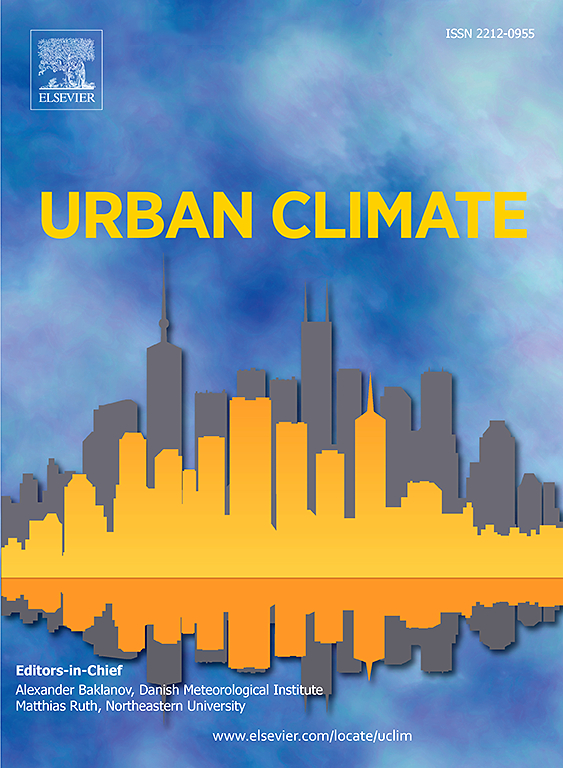Exploring environmental and meteorological factors influencing greenhouse gas emissions on major urbanized cities in Bangladesh
IF 6
2区 工程技术
Q1 ENVIRONMENTAL SCIENCES
引用次数: 0
Abstract
The greenhouse effect, which leads to global warming and climate change, is a significant concern for developing countries like Bangladesh due to its direct and substantial impacts on various sectors of society and the economy. This study focuses on greenhouse gases (GHGs) like methane (CH₄), ozone (O₃), and water vapor (WV) and their trend patterns across the four most industrialized cities in Bangladesh. For this purpose, twelve environmental and meteorological variables with 60 months of data (2019–2023), known to influence GHG emissions, were selected as predictors. A Generalized Additive Model (GAM) and Principal Component Analysis (PCA) were used to assess the relationships and predictor influence on GHGs. The results reveal a consistent seasonal pattern in the GHGs identified over the observed years. The results of GAM show that population density (PD) demonstrates a robust correlation with CH₄ across all cities, yielding high linear correlations: R2 = 0.93 for Dhaka, 0.85 for Khulna, and cubic R2 = 0.87 for Rajshahi, all statistically significant (P = 0.00). Conversely, in Chittagong, municipal solid waste (MSW)/day exhibits a strong cubic correlation with CH₄ (R2 = 0.95, P = 0.002). Moreover, O₃ and WV show proportional relationships with temperature and precipitation and also being statistically significant in all cities (p < 0.05). Notably, Dhaka exhibited the highest intercept for CH₄, while Rajshahi showed the highest for O₃ and WV. Key predictors included temperature and PD for O₃; PD, MSW, and albedo for CH₄; and precipitation and PD for WV in most of the cities. In the PCA analysis, PC1 is primarily associated with climatic factors, while PC2 reflects anthropogenic and land-use factors. PCA-regression shows the modest predictive power of the model for O3 and WV. This study provides critical city-specific insights into GHG emissions and their determinants, offering valuable guidance for policymakers and planners to formulate effective emission management strategies.
探讨影响孟加拉国主要城市化城市温室气体排放的环境和气象因素
温室效应导致全球变暖和气候变化,由于其对社会和经济各部门的直接和实质性影响,是孟加拉国等发展中国家的一个重大关切问题。本研究的重点是甲烷(CH₄)、臭氧(O₃)和水蒸气(WV)等温室气体及其在孟加拉国四个工业化程度最高的城市的趋势模式。为此,我们选取了已知会影响温室气体排放的 12 个环境和气象变量作为预测因子,这些变量拥有 60 个月的数据(2019-2023 年)。研究采用了广义相加模型(GAM)和主成分分析(PCA)来评估温室气体的关系和预测因子对温室气体的影响。结果表明,在所观测的年份中,所确定的温室气体具有一致的季节性模式。GAM 的结果表明,人口密度(PD)与所有城市的 CH₄ 都有很强的相关性,产生了很高的线性相关:达卡的 R2 = 0.93,库尔纳的 R2 = 0.85,拉杰沙希的立方 R2 = 0.87,均具有统计学意义(P = 0.00)。相反,在吉大港,城市固体废物 (MSW) / 天与 CH₄ 呈强烈的立方相关性(R2 = 0.95,P = 0.002)。此外,O₃ 和 WV 与温度和降水量呈正比关系,在所有城市中均有统计学意义(P < 0.05)。值得注意的是,达卡的 CH₄ 的截距最大,而拉杰沙希的 O₃ 和 WV 的截距最大。在大多数城市中,O₃ 的主要预测因子包括温度和 PD;CH₄ 的主要预测因子包括 PD、MSW 和反照率;WV 的主要预测因子包括降水和 PD。在 PCA 分析中,PC1 主要与气候因素有关,而 PC2 则反映了人为因素和土地利用因素。PCA 回归表明,该模型对 O3 和 WV 的预测能力一般。这项研究提供了针对具体城市的温室气体排放及其决定因素的重要见解,为决策者和规划者制定有效的排放管理策略提供了宝贵的指导。
本文章由计算机程序翻译,如有差异,请以英文原文为准。
求助全文
约1分钟内获得全文
求助全文
来源期刊

Urban Climate
Social Sciences-Urban Studies
CiteScore
9.70
自引率
9.40%
发文量
286
期刊介绍:
Urban Climate serves the scientific and decision making communities with the publication of research on theory, science and applications relevant to understanding urban climatic conditions and change in relation to their geography and to demographic, socioeconomic, institutional, technological and environmental dynamics and global change. Targeted towards both disciplinary and interdisciplinary audiences, this journal publishes original research papers, comprehensive review articles, book reviews, and short communications on topics including, but not limited to, the following:
Urban meteorology and climate[...]
Urban environmental pollution[...]
Adaptation to global change[...]
Urban economic and social issues[...]
Research Approaches[...]
 求助内容:
求助内容: 应助结果提醒方式:
应助结果提醒方式:


